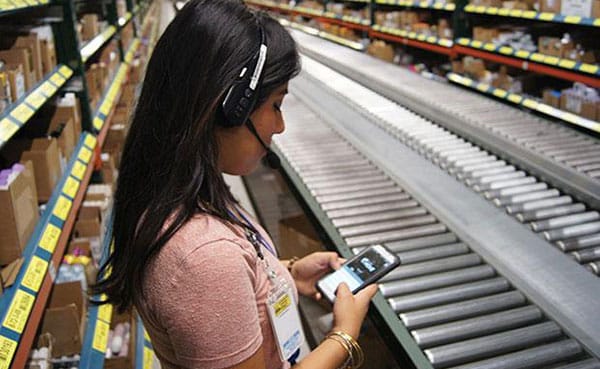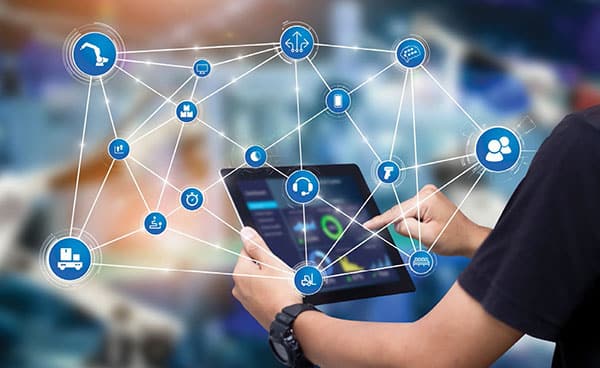If you read logistics trade magazines you’d think that multi-modal applications combining voice and scanning are sweeping the industry. Despite the buzz, many people I talk to still aren’t convinced that scanning has a place in a voice picking process.
I saw a great example of where scanning does fit with voice when I visited Oriental Trading Company earlier this week – dodging the blizzard along the way. OTC, a leading direct merchant, is using Jennifer for picking in a highly automated fulfillment center in La Vista, just outside of Omaha. OTC uses an “explode and assemble” fulfillment process. Deon Wagner, Director of Warehouse Operations at OTC, did a great job breaking that down for me: they explode incoming orders into waves and sub-waves for picking, and then they re-assemble the picked products for shipping using miles of conveyor, sophisticated sorters and WCS software from DMW&H.
For picking, OTC is using Lucas in a variety of processes, including a case-break application in which full cases of product are delivered to associates who pick and put to totes in a pick module.
Combining Voice and Scanning
To begin, associates set up totes in 21 locations on pick module shelves. They scan each tote barcode and then the barcode on the corresponding module locations to associate each tote with its position in the module. (This tote identification is needed by the downstream order re-assembly systems.) Associates could set up the totes using voice, but when you observe the process its pretty clear that they can scan a lot faster than they could read all the tote and location check strings.
After setting up the totes, the associate is ready to start pulling product. To begin, she scans a barcode on a carton of product, opens the case and scans a barcode on the first item she takes out. This product scan is to confirm that the right product was pulled from reserve. Associates have the option to read the last 4-5 digits of the carton label or item barcodes, but everyone I saw that day was scanning. I asked one of the workers why. She said, simply: “Its faster.”
From that point forward the put-to-tote process is all voice. Jennifer tells the associate how many items to take out of the case and then how many to put into which tote: put three in the tote in the red two position. The associate then confirms what she is doing by reading the check digits on the shelf labels: “zero two [location check digit], put five [quantity].”
Seven or eight years ago, Oriental Trading probably would have done this whole process by voice because there were no voice-capable mobile devices that included a scanner. In those days, a voice-plus scan process would have required a voice-only terminal and an additional scanner for every user. The extra cost of the scanner might not have been justified by the time savings of scanning. But since Oriental Trading is using Lucas Move on standard Motorola multi-modal terminals with scanners, they get the benefits of voice plus scanning at no additional cost.
At OTC the advantages of scanning plus voice are clear. They get a few minutes of time savings per user per hour, and those minutes quickly add up, especially in busy periods where every minute counts. And there’s no cost to get scanning and voice in a single system – it’s a standard capability of the Motorola hardware and the Lucas solution.





